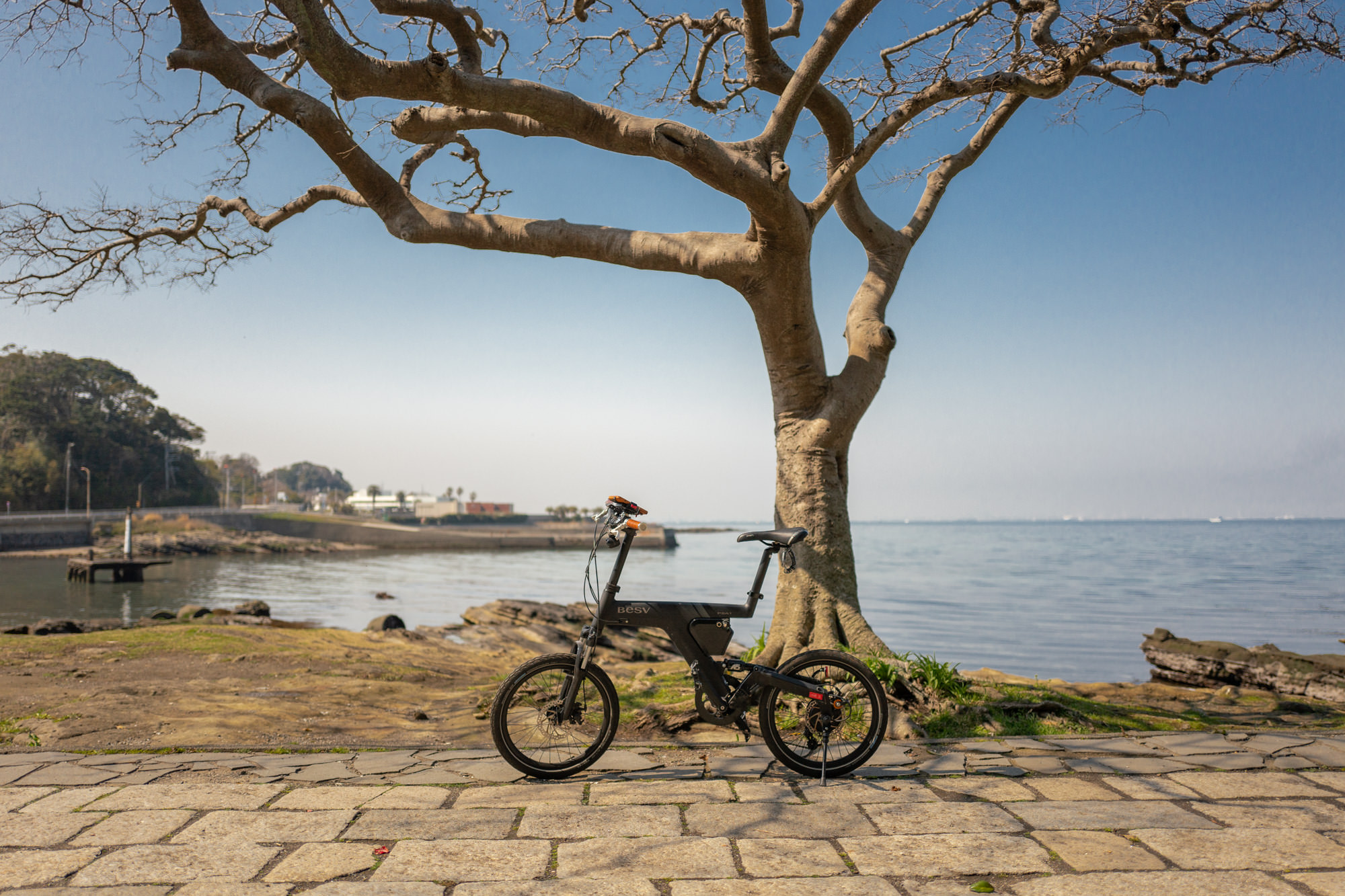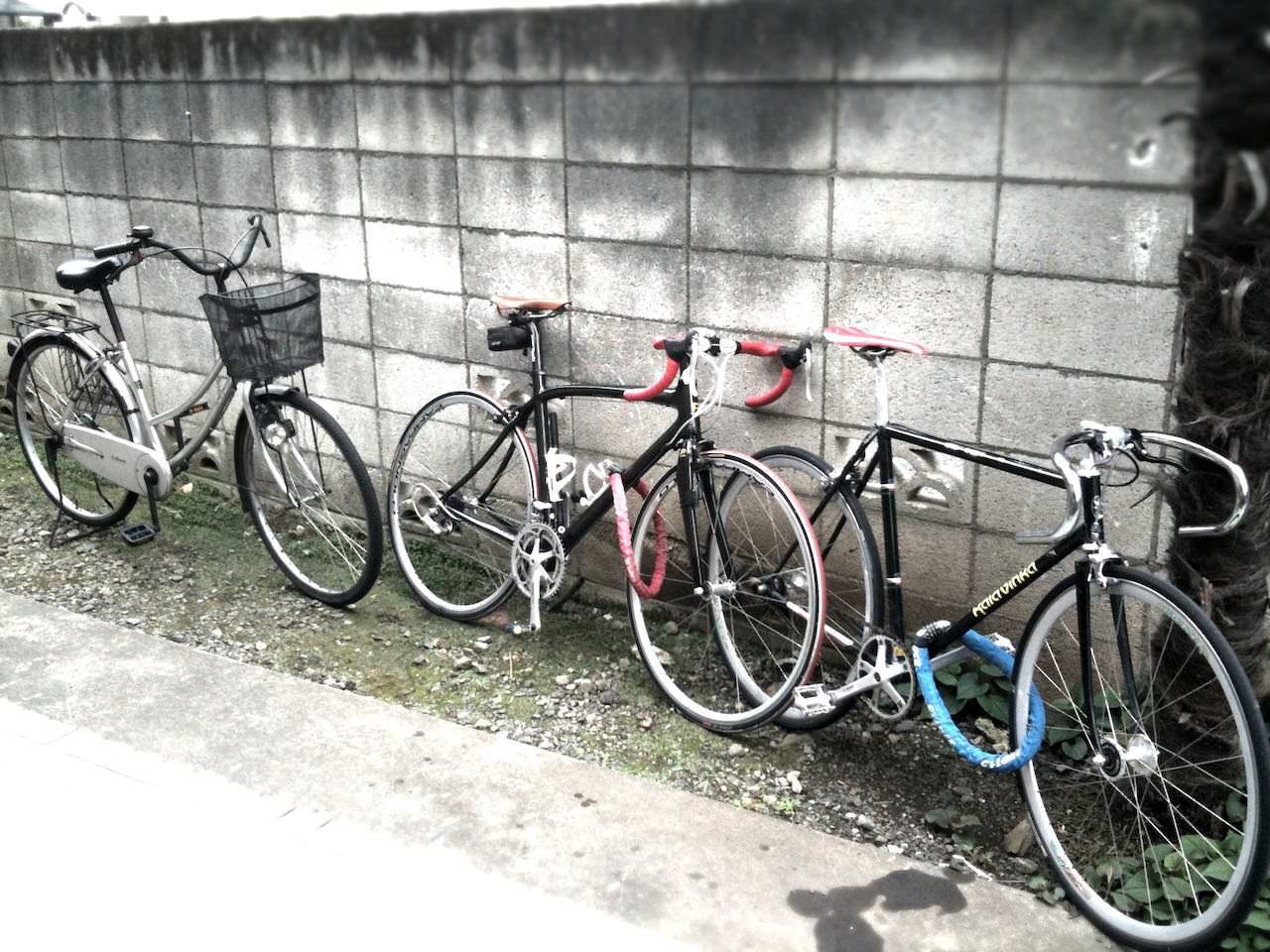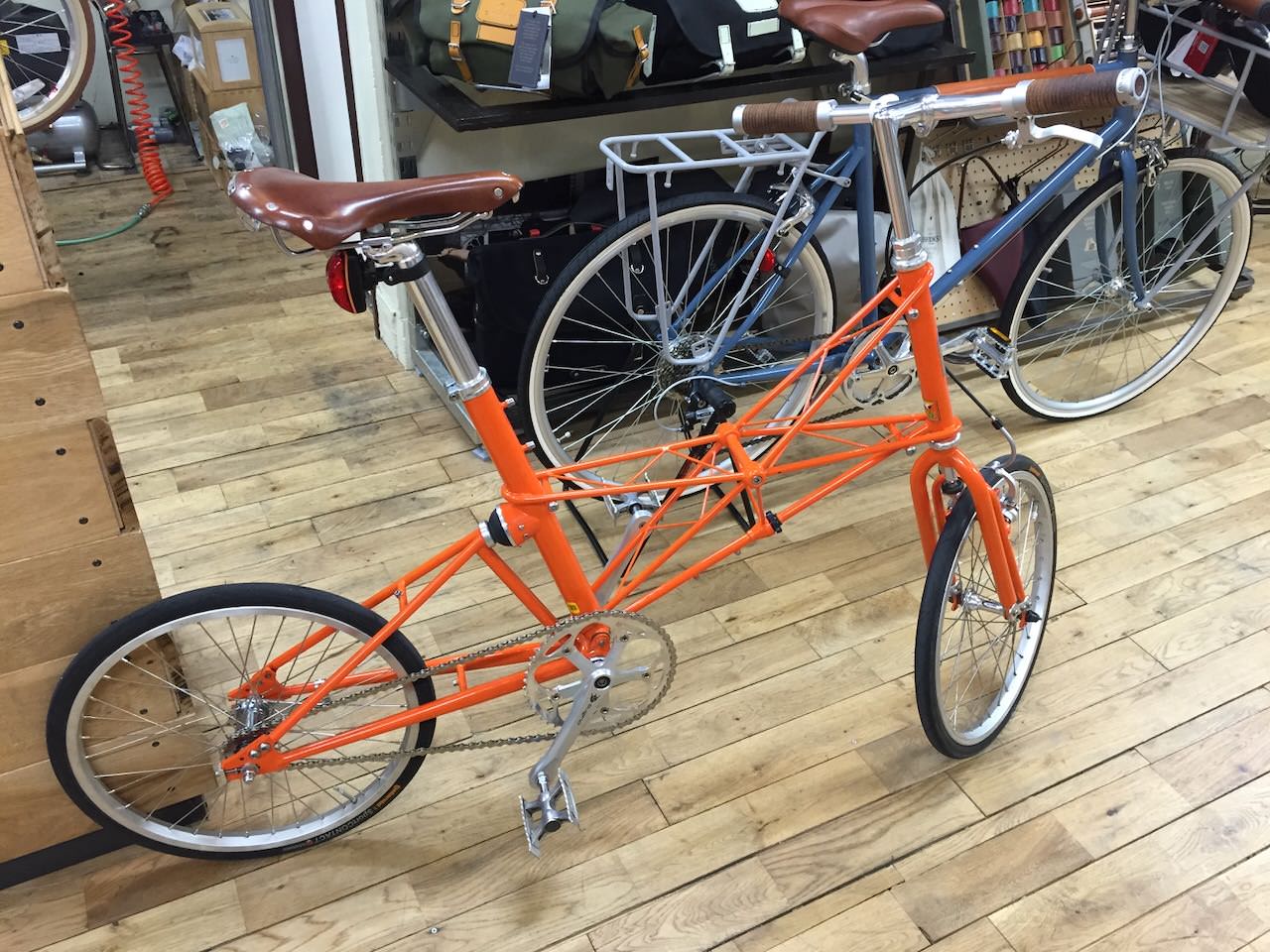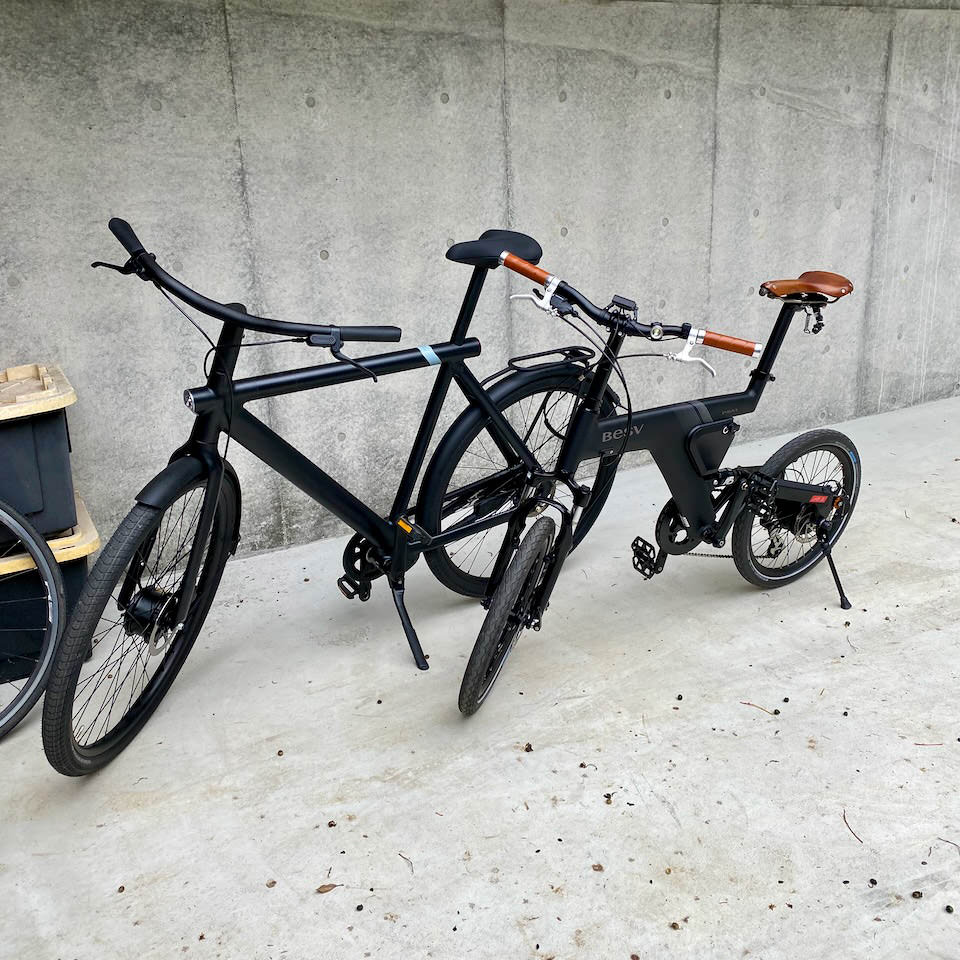
Electric Bike, Stupid Love of My Life
Reflections on eighteen months of electric bike ownership
My electric bike sings, emits a nearly imperceptible hum from its tiny motor. I love its song. A song of peace and magic. Has money ever bought as much delight as the delight of an electric bike?
The first time I rode one was nearly a decade ago, in Kyoto. The electric bike I rented was huge and unwieldy, but that tug of its motor never left my mind. I went to climb a hill and it felt as if a giant had gently placed his hand on my back and pushed me forward. That stupid smile has been on my face ever since.
Two years ago I rented another one. This one smaller, lighter, the motor more powerful. I was convinced. This is the way. Eighteen months ago, in the heart of the pandemic, I committed and bought my first electric bike and have never looked back.
Indulge me — a summer afternoon: Soaring down the coast, the ocean to one side and a strand of old pines to the other. The afternoon sun beats down but it feels cool and there’s something irrationally stirring — downright emotional — about the efficiency of this dumb machine beneath my body. The motor looks too small — just a black cylinder on the hub of the wheel. And yet it moves. It sings that song. A subtle hum. A beautiful hum. It makes me want to ride and ride, ridiculous distances, nonsensical distances. I don’t want to get to where I’m going because I want the ride to last longer. I want to linger in this space as long as possible, this space of smooth and efficient movement through the world, gliding in near total mechanical silence, just the sound of rubber on the pavement, wind in my ears, breaking waves, salt, the smell of pine. This is what electric bikes do: They drive you insane with the poetry of the world.

#So Many Bikes
All my standing life, I’ve biked. As a kid I rode a K-Mart Huffy to a rusted nub and then managed to nab a Haro Group 1. As an adult, bikes have been one of my few material indulgences (unwittingly, organically). In the past twenty years alone I’ve owned some fifteen bikes. I’ve had aluminum and carbon Bianchi road bikes. I’ve had steel Kalavinka keirin bikes with gorgeous head badges. I’ve had folding Dahon and Birdy BD-1s. I’ve had a handful of beloved brandless throwaway mamacharis — shopping bikes — that have proven hearty and fun in their own ways, and have each died uniquely. I’ve gone out of my way to get a handmade Arrow cruiser from a builder in Ogikubo. I still have a custom orange Moulton that I’ve modified into a single-speed city bomber that goes remarkably fast while floating atop its simple suspension.
And on and on — bikes. Why? Because as any bike lover will tell you, to be ensorcelled by the bike is to crave one and only one thing: More bike. Each new bike is like riding once again for the first time. Exploring a city on a mamachari is different than a BD-1 is different than a Moulton. All thrilling. The bikes change, and so, too does your relationship to the pavement. My love for bikes has no categorical allegiances; if it has two wheels, and pedals, I’m interested. I want to ride them all.

Summers in most of Japan have never been easy. The temperatures England flirted with in 2022 are temperatures Tokyoites have contended with for centuries (and now contend with ones even higher). Crushing heat coupled with suffocating humidity. A three-shower-a-day kinda summer. Watch an Ozu film and observe the languid and supine impulse of its inhabitants during summertime scenes — that’s not affect, it’s survival. In Japan’s August, you simply can’t walk a block without losing most of your moisture.
Bikes have always helped. A bicycle generates a microclimate with minimal effort. Standing on a street corner you may be soaked, but on a bike, the wind whooshing past, you are crisp(er) and dry(er). An electric bike only amplifies the effect.
When I was a child I dreamt of having a personal helicopter. Powered by my feet and a bit of magic (certainly not gasoline, oddly, thinking back on it now). I imagined quietly gliding over the city in this tiny contraption, floating from home to video rental shop to diner, stopping by a friend’s house along the way. An electric bike gets me most of the way to this feeling.
In the past eighteen months I’ve put several thousand kilometers on my electric bikes. It feels like cheating in every best possible way. I live in a seaside town south of Tokyo and traffic can get ridiculous, its ancient roads sized for horses, not cars. The electric bike swoops between and alongside these stale processions of heat and burning fuel. Drifting behind a gas-powered scooter or moped feels like observing some Victorian contraption — inefficient and loud and clunky and burdensome and pollutant. And not much faster (often much slower) or more useful than an electric bike.

#Electrics
I own two electric bikes. My first purchase was the strangely named BESV PSA1 — which is a smaller wheeled (20"), rear-wheel drive machine, with mostly off-the-shelf components allowing you to customize it to your liking. 1 And then, because I was so enamored by the BESV — so seduced by its small motor of umph, so wanting more and different electric bike experiences — I went and picked up a front-wheel drive Vanmoof X3 — the smaller-wheeled brother (24") to Vanmoof’s (quite frankly) giant S3 — just a few months later.
I love them both like damaged brothers, because both of these bikes are flawed in frustrating ways.
The electronic brain on the BESV is as dumb as they come.2 The settings reset each time you turn the bike on. The acceleration curves feel unrefined — herky-jerky, you might say. Its app is the worst app I have on my phone — badly designed, nearly functionally useless, clearly engineered without love. And yet. Despite these flaws I put hundreds of kilometers on this thing in the first month. The front and rear suspension turn every road to glass, and are even fine for dirt trails; I find myself hunting down paths through parks I’d never otherwise think about. Suddenly every hilly road is a thing demanding to be explored. Up up up the little machine yells, and you follow its command.
Guests who stay at my studio are given the BESV to ride. We take it down the coast. It never fails to amaze. One friend felt compelled to pet it upon dismount, saying, Good job, buddy, so quick and deep was the affection for the thing.
The Vanmoof is much smarter — the brain and software within it are refined, the app good, the acceleration curves smooth — but the bike is all custom components, and they aren’t the highest quality at that. The automatic shifting mechanism on mine failed twice in the first two months, requiring shipping the bike to the Vanmoof store.3 The seat post bolt broke off in the post. The original plastic pedals felt cheap and flimsy (pedals are one of the few things you can swap for your own). The aluminum frame is too stiff for the speed the bike generates — it can feel like you’ve been rattled to death after a bumpy road. (And stiffness mitigation by lowering tire pressure seems to only increase possibility of puncture.) But, more than all that, the design of the bike has a dangerous fundamental flaw: The bottom bracket is simply too low.
Of all my many, many bikes, I’ve never had a pedal bottom out. On this Vanmoof X3? Dozens of times. Most critically during a turn at speed — the pedal hit the pavement, jumped the bike sideways, and sent me flying. It’s the only bad crash I’ve had in decades. So I’ve had to modify the way I ride — no pedaling into or out of turns, hyper awareness of deviations in lateral road slope — because, despite all this, I can’t stop riding this stupid thing. It sings — that hum. It is joy. I reach for it daily and it takes me around the peninsula and makes me happy to be alive.

Allow me to share a dirty secret: More often than not, at midnight I can’t repress the impulse — I have to take a bike out. Out the bike comes and together we head into the empty streets of my town and hum our way all over, visiting temples in total silence. There are no cars. Often no people. It feels illicit — this slipping around town, this sliding into temple parking lots in the shroud of the night, looking at their old beams, feeling ten years old and grateful for both the ability and awareness to be doing just this very thing at this very moment.
I’ve long since posited world peace could be achieved if you bought everyone in the world a bike, but now I want those bikes to be electric. I want everyone to feel this silliness, this punch-drunk stupidity of pure love, this sense of cheating the rules, the norms, this sense of ever-present delight. At our worst, humans mindlessly consume, sear the earth and each other, fill our bodies with poisons. At our best we invent electric bikes. Batteries have gotten more efficient, motors smaller and more powerful. The last decade has brought great efficiency to these machines, and the next ten years will only double down on these gains. Electric bike numbers are up, year over year over year. Tremendously so. Those who know, proselytize. We can’t help it. The charm is too great. The game non- zero sum. The more people who know, the better the world. It’s a wild notion, this sense of goodness to be had if you just reach out for it. Goodness with no real downside. Like solar panels or wind turbines, electric bikes are machines that buoy the spirit and the earth.
Buy the best electric bike you can within your budget. Stretch if possible. Usually, the more you spend the lighter the machine, the more powerful the motor, the longer-lasting the battery. Depending on which country you live in top speeds will differ. In Japan the bike’s are capped at 24km/h. In America, 32km/h. Some places only allow for pedal-assist — meaning the motor only works when pedaling. Others allow throttles, blurring the line between bike and scooter. Laws will change in the coming years as more people adopt the machines and cities themselves adapt. This is just the start. Ten years ago it was fairly rare to see an electric bike around Tokyo. Today, it seems as if every parent hauling their kids is doing so electrically.
A good strategy: Find a local bike shop that will let you try out several electric bikes. Some have front-hub motors, others rear-hub motors. Others, the motor sits in the center, between the cranks. Each has a subtly different feel. Going up a hill, a front-motor’d machine may skip or slip as you pull back on the handlebars, but on flat land will feel more like being tugged through the world.
Sure, electric bikes aren’t cheap. But I believe they’re a rare object to be well worth the cost. This in spite of their annoying flaws, their often bad software, their defective geometries. Because they open the world. Whatever world may have been nearby, an electric bike brings it nearer. This is worth more than you might estimate. These bikes sing their little songs and the smile on your face makes you look like a village idiot, but what a wonderful idiot to be.
A summer night: Biking home alongside a river. The air is thick with humidity and cicadas vibrate wildly in the distance. The moon is out. My choices: straight home along the shimmering moonlit river, or take a detour, up into the dark mountains, doubling the distance. To my surprise, I choose the mountains almost every time. More! That tiny child who fantasized about helicopters yells. More of this, whatever this is. More more more. And so I feed that impulse, an impulse generated and nurtured by the electric bike. Into the shadow mountains we go, up, pushed by the hand of that giant, always present, always ready to help. It is a ridiculous thing. A thing of peace and magic. An owl hoots. The smile has never left my face.
#Noted:
-
I upgraded my BESV to an SRAM drivetrain and Paul brake levers and Klamper disc calipers, some MKS pedals, and a set of Brooks grips and saddle and it feels wonderful through and through. These Paul Klampers are mechanical. The Vanmoof uses (generic?) hydraulic brakes. After thousands of kilometers, my conclusion is: hydraulics feel nice, but they are fussy (and perhaps Vanmoof’s chosen components are sub-optimal) and difficult (?) to tune on your own. In the end, I just don’t think they’re worth it. Too “delicate.” The Pauls feel as fresh today as the day I put them on, whereas the hydraulics have required much bikeshop tuning over the course of the last eighteen months. Were the Vanmoof more flexible, I’d happily swap out for mechanicals. This lack of flexibility is a bummer because, unlike an Apple iPhone, for example, where the components tend to be best of class (think: modem, CPU, camera unit, etc), the physical components on a Vanmoof most definitely aren’t — nor do they offer the option to pay more to get better components. ↩︎
-
Oh, how I wish this thing was open source, hackable — because it’s so close to great. Sadly — and I don’t know how else to frame this — it feels like the engineers behind the software don’t ride bikes. At least not this one. The software flaws are so fundamentally obvious, that anyone who had a) access to the code, and b) rode the bike, couldn’t NOT fix these obvious issues. What I really wish, though, is that I could slap the Vanmoof brain onto the BESV body and, well, then we’d be in Electric Bike Elysium. ↩︎
-
I’ve since learned — the drive train of the Vanmoof is not to be “ridden” like a “bike” but rather, “feathered” like a delicate sand castle — assume the gears could explode at any moment and apply the least amount of pressure you can; the motor is strong enough to take care of most of the rest. In this way, the Vanmoof feels more like a moped that uses “pedal assist” as a suggestion than a pure electric-assist bike — a smart way to get around motorcycle laws in most countries, which I assume is the main point. Not to say you don’t get a workout on the Vanmoof, you do, but not nearly as much as the more classically committed BESV — which really does require you to pedal.
Maybe this is a good place to bring up the question: Why not just get an electric scooter? I think it mainly comes down to flexibility and philosophy. With a pedal assist bike (even if the pedaling required is minimal) you simply have more flexibility in parking, in riding, in “lightness” of transportation, than with an electric scooter. Also: Insurance costs, maintenance, and higher base cost. And philosophically, being able to still use the bike as a “bike” without power feels like an aspect of these machines we shouldn’t be so quick to toss aside. ↩︎
